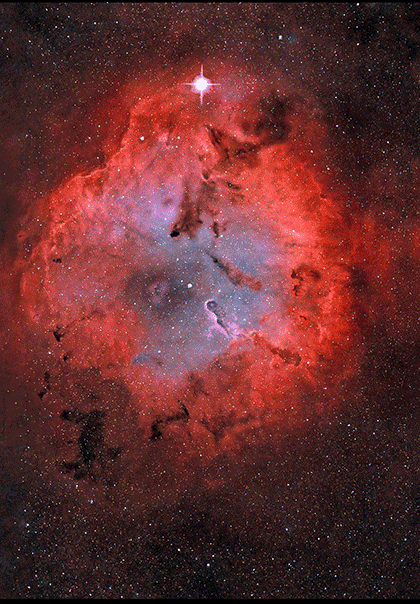Curate, connect, and discover
Cosmos - Blog Posts

"(light) years" oil on canvas 50x70cm
inspired by the photo NASA took on my birthday^^
passion is everything. i think painting remains the one thing i do for me. the only thing that disregards social standards and the one moment that captures time and freezes it.
i was thinking so much about the impossibility of capturing the constant movement and expansion of our world. it's a feeling similar to being aware of not knowing the depths of our human kind. never being sure of a truth. the sadness of not remembering every word of a book.

The Mountains of NGC 2174. Image Credit: NASA, ESA, Hubble Heritage Team (STScI/AURA)
Decoding Nebulae
We can agree that nebulae are some of the most majestic-looking objects in the universe. But what are they exactly? Nebulae are giant clouds of gas and dust in space. They’re commonly associated with two parts of the life cycle of stars: First, they can be nurseries forming new baby stars. Second, expanding clouds of gas and dust can mark where stars have died.

Not all nebulae are alike, and their different appearances tell us what's happening around them. Since not all nebulae emit light of their own, there are different ways that the clouds of gas and dust reveal themselves. Some nebulae scatter the light of stars hiding in or near them. These are called reflection nebulae and are a bit like seeing a street lamp illuminate the fog around it.

In another type, called emission nebulae, stars heat up the clouds of gas, whose chemicals respond by glowing in different colors. Think of it like a neon sign hanging in a shop window!

Finally there are nebulae with dust so thick that we’re unable to see the visible light from young stars shine through it. These are called dark nebulae.

Our missions help us see nebulae and identify the different elements that oftentimes light them up.
The Hubble Space Telescope is able to observe the cosmos in multiple wavelengths of light, ranging from ultraviolet, visible, and near-infrared. Hubble peered at the iconic Eagle Nebula in visible and infrared light, revealing these grand spires of dust and countless stars within and around them.

The Chandra X-ray Observatory studies the universe in X-ray light! The spacecraft is helping scientists see features within nebulae that might otherwise be hidden by gas and dust when viewed in longer wavelengths like visible and infrared light. In the Crab Nebula, Chandra sees high-energy X-rays from a pulsar (a type of rapidly spinning neutron star, which is the crushed, city-sized core of a star that exploded as a supernova).

The James Webb Space Telescope will primarily observe the infrared universe. With Webb, scientists will peer deep into clouds of dust and gas to study how stars and planetary systems form.

The Spitzer Space Telescope studied the cosmos for over 16 years before retiring in 2020. With the help of its detectors, Spitzer revealed unknown materials hiding in nebulae — like oddly-shaped molecules and soot-like materials, which were found in the California Nebula.

Studying nebulae helps scientists understand the life cycle of stars. Did you know our Sun got its start in a stellar nursery? Over 4.5 billion years ago, some gas and dust in a nebula clumped together due to gravity, and a baby Sun was born. The process to form a baby star itself can take a million years or more!

After billions more years, our Sun will eventually puff into a huge red giant star before leaving behind a beautiful planetary nebula (so-called because astronomers looking through early telescopes thought they resembled planets), along with a small, dense object called a white dwarf that will cool down very slowly. In fact, we don’t think the universe is old enough yet for any white dwarfs to have cooled down completely.
Since the Sun will live so much longer than us, scientists can't observe its whole life cycle directly ... but they can study tons of other stars and nebulae at different phases of their lives and draw conclusions about where our Sun came from and where it's headed. While studying nebulae, we’re seeing the past, present, and future of our Sun and trillions of others like it in the cosmos.

To keep up with the most recent cosmic news, follow NASA Universe on Twitter and Facebook.
Make sure to follow us on Tumblr for your regular dose of space.
via @teunvanderzalm

Esta incrível imagem da ascensão da Terra foi tirada durante a órbita lunar pela tripulação da missão Apollo 11 em julho de 1969. A primeira missão lunar tripulada, a Apollo 11, foi lançada a bordo de um veículo de lançamento Saturn V do Centro Espacial Kennedy, Flórida, em 16 de julho de 1969 e retornou com segurança à Terra em 24 de julho de 1969. A tripulação de 3 homens a bordo do voo consistia em Neil A. Armstrong, comandante; Michael Collins, piloto do Módulo de Comando; e Edwin E. Aldrin Jr., piloto do Módulo Lunar.

Carl Sagan 🌌
O pálido ponto azul 🌍
I wrote a poem about my first love about a month into our relationship. Today they broke up with me. Here is that poem:
Light Rays
Light rays filtering in all the way from the sun.
Sometimes after a detour to the moon
Filtering in through leaves or bouncing off the snow or ricocheting off someone‘s iris into my pupil.
So much light entering my soul.
So much distance that ray has traveled
All so that my soul can become enthralled with another’s.
When I look someone in the eyes I feel their soul capturing mine; overwhelming me with awe
I bathe in the depths of another’s pupils. Become absorbed by the ever-expanding darkness. Let everything else fade. The darkness strengthened by the photon ring surrounding their pupils;
flecks of light which absorb and reflect rays, surrounding and contrasting the center.
I know I shouldn’t stare into the sun, for I might go blind from the magnitude of pure white light
But when I peer into the darkest depths of another all other senses fade away, consumed by my captivation.
I often look just shy of someone’s gaze;
Their nose, their eyelid.
Otherwise, I’d always be getting lost exploring the souls of others.
If I truly look you in the eye you’ll watch as I get absorbed by you.
If I look you in the eye it means I want to feel totally embraced by you.
If I look you in the eye, it might even mean I love you.
Otherwise, I hope hanging by the hawking radiation, just out of reach of being absorbed, will suffice.
HALLOWEEN
Throughout the COSMOS!
With Halloween just around the corner, NASA has released its latest Galaxy of Horrors posters. Presented in the style of vintage horror movie advertisements. As fun and creative as all three posters are, they're based on real phenomena. 🎃
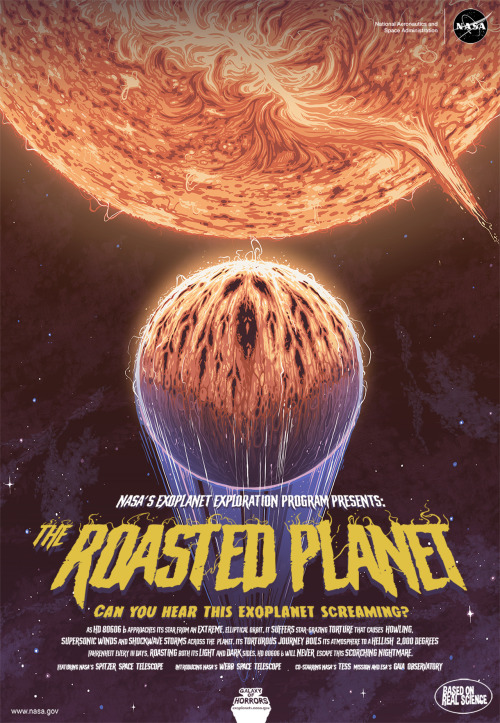
Can you hear this exoplanet screaming?
As HD 80606 b approaches its star from an extreme, elliptical orbit, it suffers star-grazing torture that causes howling, supersonic winds and shockwave storms across the planet. Its torturous journey boils its atmosphere to a hellish 2,000 degrees Fahrenheit every 111 days, roasting both its light and dark sides. HD 80606b will never escape this scorching nightmare.
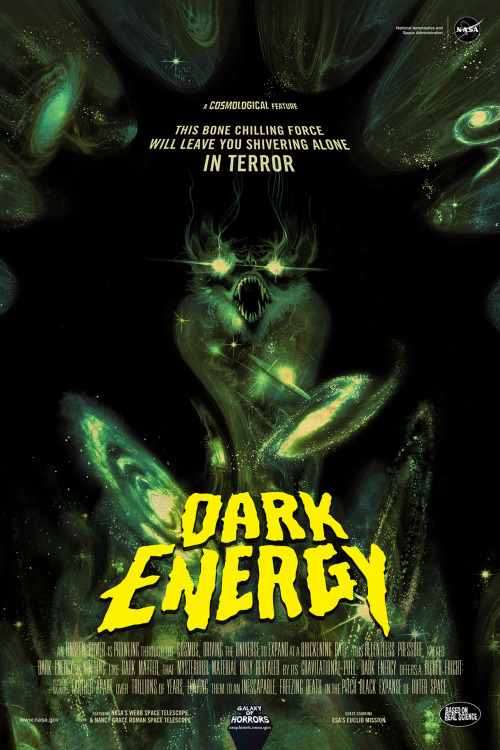
This bone-chilling force will leave you shivering alone in terror!
An unseen power is prowling throughout the cosmos, driving the universe to expand at a quickening rate. This relentless pressure, called dark energy, is nothing like dark matter, that mysterious material only revealed by its gravitational pull. Dark energy offers a bigger fright: pushing galaxies farther apart over trillions of years, leaving the universe to an inescapable, freezing death in the pitch black expanse of outer space.
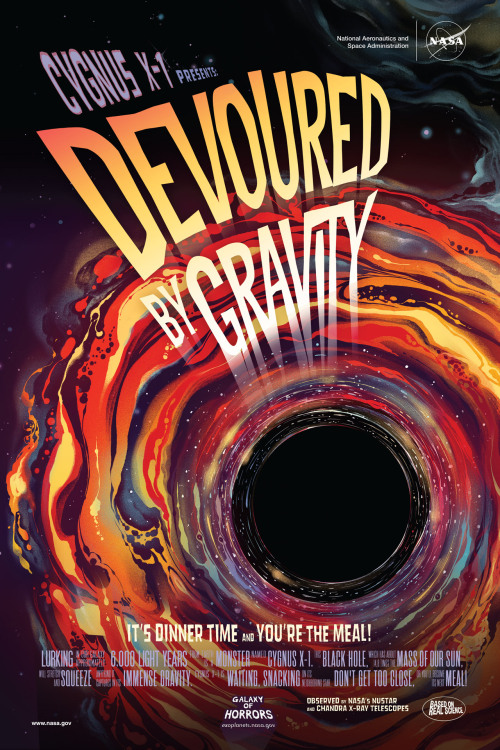
Cygnus X-1 Presents:
It’s Dinner Time and You’re The Meal!
Lurking in our galaxy, approximately 6,000 light-years from Earth, is a monster named CygnusX-1. This black hole, which has about 14.8 times the mass of our Sun, will stretch and squeeze anything it captures in its immense gravity. Cygnus X-1 is waiting, snacking on its neighboring star. Don’t get too close, or you’ll become its next meal!
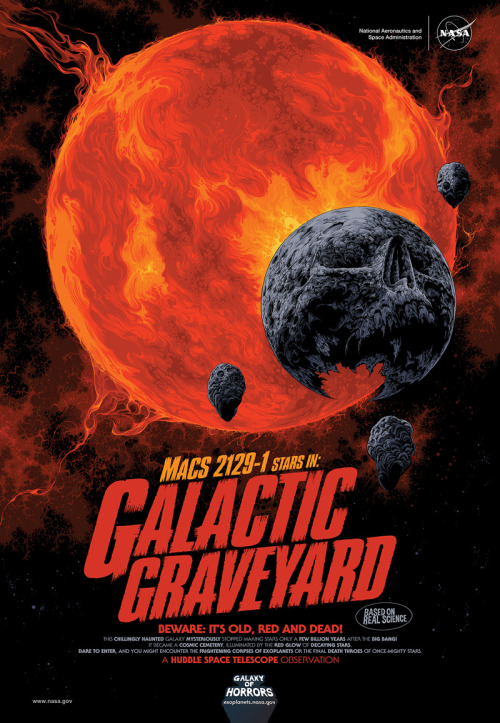
This chillingly haunted galaxy mysteriously stopped making stars only a few billion years after the Big Bang! It became a cosmic cemetery, illuminated by the red glow of decaying stars. Dare to enter, and you might encounter the frightening corpses of exoplanets or the final death throes of once-mighty stars.
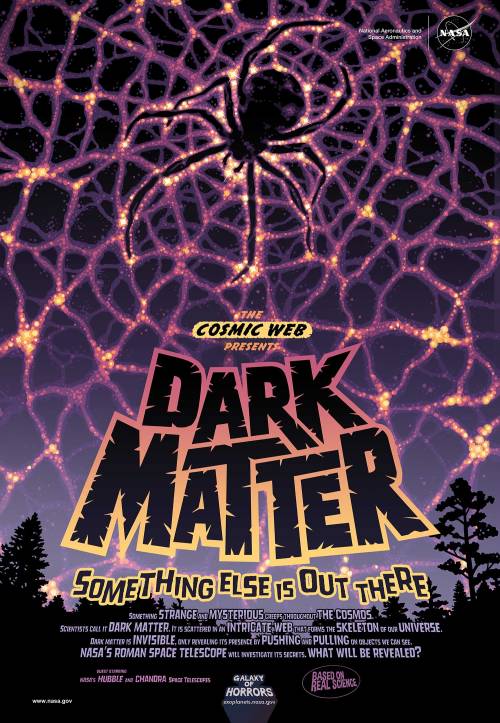
Something strange and mysterious creeps throughout the cosmos. Scientists call it dark matter. It is scattered in an intricate web that forms the skeleton of our universe. Dark matter is invisible, only revealing its presence by pushing and pulling on objects we can see. NASA’s Roman Space Telescope will investigate its secrets. What will be revealed?
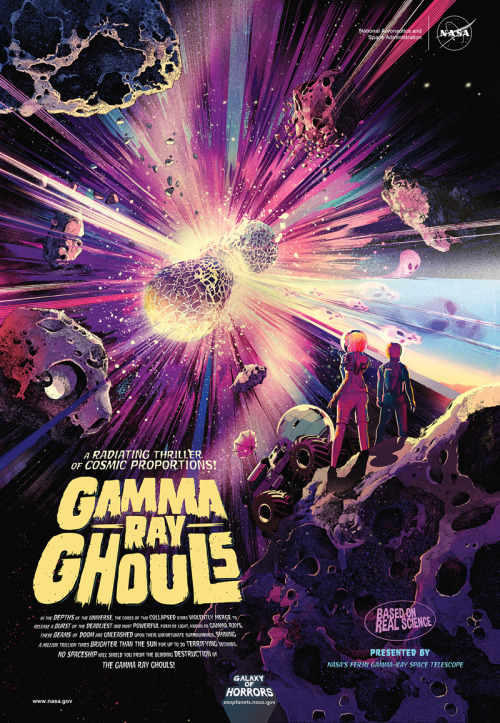
In the depths of the universe, the cores of two collapsed stars violently merge to release a burst of the deadliest and most powerful form of light, known as gamma rays. These beams of doom are unleashed upon their unfortunate surroundings, shining a million trillion times brighter than the Sun for up to 30 terrifying seconds. No spaceship will shield you from the blinding destruction of the gamma ray ghouls!
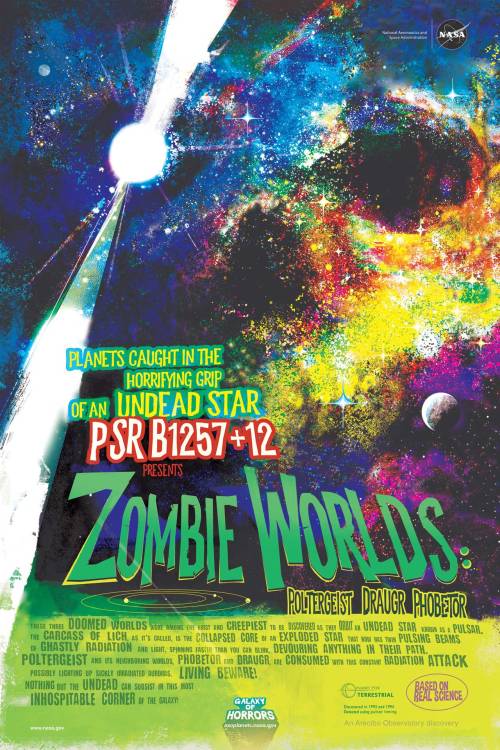
These doomed worlds were among the first and creepiest to be discovered as they orbit an undead star known as a pulsar. Pulsar planets like Poltergeist and its neighboring worlds, Phobetor and Draugr, are consumed with constant radiation from the star’s core. Nothing but the undead can subsist in this most inhospitable corner of the galaxy.
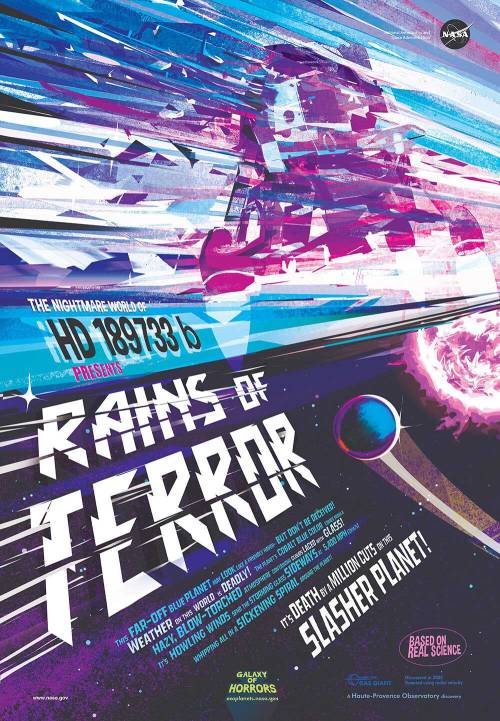
This far-off blue planet may look like a friendly haven – but don’t be deceived! Weather here is deadly. The planet’s cobalt blue color comes from a hazy, blow-torched atmosphere containing clouds laced with glass. Howling winds send the storming glass sideways at 5,400 mph (2km/s), whipping all in a sickening spiral. It’s death by a million cuts on this slasher planet!

This could be The First Confirmed Astronomical Discovery of an Extrasolar_Moon more than 20_Years after The First Confirmed Astronomical Discovery of an Extrasolar_Planet was made!
One interesting way for Astronomers to search for Extra_Solar Civilizations and/or Extra_Solar Alien_Technology is to search for Chemical Signatures of Advanced Alien_Technology like:
Chlorofluorocarbons.
idc if it's midnight at our time by its Live. I'm gonna watch it.

Ever wanted to look back in time? This week, we’re launching a kind of time machine – a telescope so powerful it will help us see back some of the first stars and galaxies made after the Big Bang.
The James Webb Space Telescope is the largest and most advanced telescope we’ve ever put in space. With revolutionary technology, it will study 13.5 billion years of cosmic history and help humanity understand our place in the stars.
Tomorrow, Dec. 25, at 7:20 a.m. ET (12:20 UTC), the Webb Telescope is set to launch from French Guiana, beginning a 29-day journey to a spot a million miles away.
How to Watch:
In English:
Dec. 25
Live coverage starts at 6:00 a.m. ET/11:00 UTC
Facebook, YouTube, Twitter, Twitch
In Spanish:
Dec. 25
Live coverage starts at 6:30 a.m. ET/11:30 UTC
Facebook, YouTube, Twitter
Once Webb launches, the journey has only just begun. The telescope will begin a 2-week-long process of unfolding itself in space before settling in to explore the universe in ways we’ve never seen before.
Follow along on Twitter, Facebook and Instagram and with #UnfoldTheUniverse.

Quiero volver!!
La luna es la que te dedico yo, por ser una mujer llena de características únicas y especiales, aquellas que solo tú y tu interior conocen, esas que solo te identifican y te caracteriza por ser una mujer tan inteligente y tan deslumbrante
“El universo es una cadena de sucesos que interactuan entre si, generando y destruyendo vida”
@p-r-o-h-u-m-a-n


























